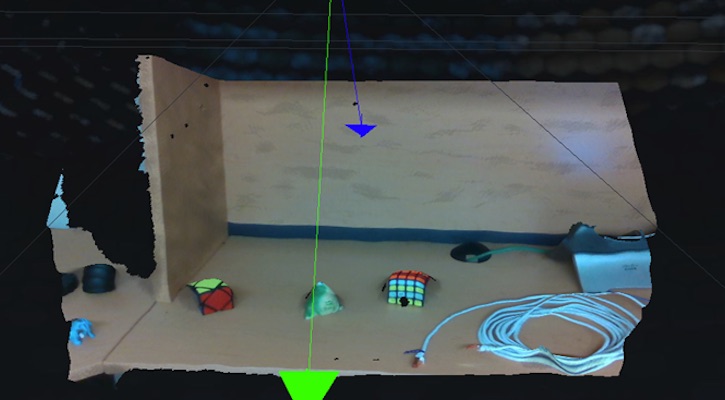|
Listen to this article  |
Like many others, I was saddened by the news that Intel is winding down its RealSense business. There was a time where I struggled to find meaningful uses for their cameras. They were small and affordable, but they had too much noise and not enough accuracy for the specific applications I was involved with. That changed with the Intel RealSense D455 stereo depth camera.
The first application we tried the D455 on was one where the D435 failed to meet the requirements under benchmark testing. The amount of noise and waves in the depth image were simply too great. The end-user expressed concern when reviewing the output. After reading the specs of the D455, purchasing a unit for the lab, and sharing the results with the team, the D455 was selected for the application.
Within a few minutes of plugging in a D455 for the first time, it was apparent how much more stable the 3D image was compared to the 415/435. The rippling “quantum foam” I was so used to seeing was greatly reduced. The wider, colorized 3D image made it much easier to see what was going on. The higher accuracy added more detail to objects that were just blobs before. These combine to make it a practical option for real robotic projects.

Image output from Intel RealSense D435 stereo depth camera.

Image output from Intel RealSense D455 stereo depth camera.
We have the opportunity to use a significant amount of these D455 units in this upcoming application. It is also clear this camera will continue to be a contender for numerous other projects as well. I know the team here is excited to see this product continue to be supported, with long term availability, and eagerly await clarification from Intel about the details around support and future updates to this product and the other stereo-based products they indicated they will continue to support.
As part of the ROS-Industrial open-source project, we continue to provide information and resources around 3D cameras that our team here in the Americas has tested and our partners around the world have tested. You can see updates to this list, which also includes legacy hardware for comparison, here.
Credit: Source link


Comments are closed.